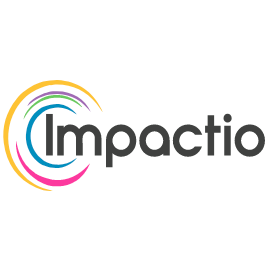Scala vs Java: Which Is Right For You?

Java has been one of the most popular programming languages for decades. When it was first released, it offered a unique way of developing software for multiple platforms.
Thanks in large part to its popularity, there have been a couple of languages designed to address its perceived shortcomings and improve on what makes it great. Scala is one such language.
What are the differences between these two languages? Which should you choose?
Java: The King of Cross-Platform Development
When Java burst onto the scene in the mid-90s, a fundamental element that went hand-in-hand with the new language was the Java Virtual machine (JVM). The JVM was responsible for a Write Once, Run Anywhere (WORA) philosophy. As long as the JVM was ported to a particular platform, any software written in Java would be able to run on that platform.
Once a Java developer writes their code, the JVM takes it and translates it into Java bytecode. The JVM’s Just In Time (JIT) compiler then converts the bytecode into machine code for the target platform. To help speed up the performance, the JIT compiler keeps the compiled code in memory.
This layer of abstraction means that programmers don’t need to worry about targeting the specific application programming interfaces (API) or frameworks of the target platform. Instead, they can simply focus on writing Java code and let the JVM handle the rest.
As a result of this approach, Java experienced a meteoritic rise in popularly, being used for desktop applications, server apps, and, more recently, mobile applications. Especially with Google’s adoption of Java as the premier language for Android development, the language’s popularity only increased even more. Java has also found a use in embedded systems, where it has become a popular option for Internet of Things (IoT) devices.
Advantages of Java
The very design of Java gives it a number of advantages over other languages. First and foremost, is Java’s cross-platform nature. While not perfect, Java’s approach has come as close as any to achieving true WORA capabilities.
Java is relatively easy to learn compared to other languages. Because programmers only have to worry about targeting the JVM, Java provides a level of abstraction that makes it easier for newer developers to pick up. Another factor that makes Java easier than many languages is the fact that it has automatic memory allocation and garbage collection. As a result, developers don’t need to worry about managing resources as much as with other languages.
Java is also well-known for security. While all languages have flaws, Java has maintained a reputation for being one of the more secure options in use.
Java is also an object-oriented programming (OOP) language. Whereas older languages were often procedural in nature, OOP languages revolve around the concept of objects that can contain both information and code. Many programmers find OOP principles easier to understand, and virtually all newer languages employ OOP design.
In spite of its many advantages, however, Java does have some cons, cons that Scala tries to address.
The Rise of Scala
Scala was publicly released in 2004. Its creator, Martin Odersky, had been working on the language since 2001. One of the fundamental goals behind Scala’s creation was to improve on Java’s shortcomings.
To achieve this, Scala was designed to be 100% compatible with Java. Like Java, Scala code is run via the JVM. What’s more, libraries written in either Java or Scala can be used by the other natively.
Scala Advantages
One of Scala’s biggest benefits is the fact that it features both OOP and functional programming paradigms. In a functional programming language, the emphasis is on results, not the process. As a result, like other functional languages, Scala treats function as first-class citizens.
Another benefit of functional programming in Scala is the use of immutable data structures. Other types of languages edit and change data when performing calculations or functions on it. In contrast, in Scala, a programmer would create a new structure with the edited/updated data, rather than change the original one. This makes functional languages like Scala safer and easier than other paradigms when it comes to data integrity.
Functional languages, including Scala, handle concurrency better than other languages. As a result, Scala is a better option for parallel programming than Java.
As Enrique Jardiel Poncela famously said: “When something can be read without effort, great effort has gone into its writing.”
While Poncela was speaking about writing, that principle also applies to program in Scala. Scala’s code is cleaner and more compact, but this comes with the trade-off of being more difficult to write.
In addition, while cleaner, more concise code would imply Scala is faster than Java, many tests and benchmarks show the opposite to be true. In most scenarios, Java has a performance advantage over Scala, although it will likely not be noticeable in most applications.
Conclusion
Which language is right for you? The fact is both of these languages have a place in modern development. Java is the old standard, with the larger developer community and time-tested paradigms. It also offers better performance than Scala in most situations.
Scala, on the other hand, is the newer upstart that offers more modern, forward-looking ways of doing things. It also scales better, especially in parallel computing applications.
Fortunately, in most cases, the debate between Scala and Java is not an either-or. Both of these languages are powerful tools that complement each other in many ways. As a result, programmers would do well to be proficient with both.
Related Articles

Java has been one of the most popular programming languages for decades. When it was first released, it offered a unique way of developing software for multiple platforms.
Thanks in large part to its popularity, there have been a couple of languages designed to address its perceived shortcomings and improve on what makes it great. Scala is one such language.
What are the differences between these two languages? Which should you choose?
Java: The King of Cross-Platform Development
When Java burst onto the scene in the mid-90s, a fundamental element that went hand-in-hand with the new language was the Java Virtual machine (JVM). The JVM was responsible for a Write Once, Run Anywhere (WORA) philosophy. As long as the JVM was ported to a particular platform, any software written in Java would be able to run on that platform.
Once a Java developer writes their code, the JVM takes it and translates it into Java bytecode. The JVM’s Just In Time (JIT) compiler then converts the bytecode into machine code for the target platform. To help speed up the performance, the JIT compiler keeps the compiled code in memory.
This layer of abstraction means that programmers don’t need to worry about targeting the specific application programming interfaces (API) or frameworks of the target platform. Instead, they can simply focus on writing Java code and let the JVM handle the rest.
As a result of this approach, Java experienced a meteoritic rise in popularly, being used for desktop applications, server apps, and, more recently, mobile applications. Especially with Google’s adoption of Java as the premier language for Android development, the language’s popularity only increased even more. Java has also found a use in embedded systems, where it has become a popular option for Internet of Things (IoT) devices.
Advantages of Java
The very design of Java gives it a number of advantages over other languages. First and foremost, is Java’s cross-platform nature. While not perfect, Java’s approach has come as close as any to achieving true WORA capabilities.
Java is relatively easy to learn compared to other languages. Because programmers only have to worry about targeting the JVM, Java provides a level of abstraction that makes it easier for newer developers to pick up. Another factor that makes Java easier than many languages is the fact that it has automatic memory allocation and garbage collection. As a result, developers don’t need to worry about managing resources as much as with other languages.
Java is also well-known for security. While all languages have flaws, Java has maintained a reputation for being one of the more secure options in use.
Java is also an object-oriented programming (OOP) language. Whereas older languages were often procedural in nature, OOP languages revolve around the concept of objects that can contain both information and code. Many programmers find OOP principles easier to understand, and virtually all newer languages employ OOP design.
In spite of its many advantages, however, Java does have some cons, cons that Scala tries to address.
The Rise of Scala
Scala was publicly released in 2004. Its creator, Martin Odersky, had been working on the language since 2001. One of the fundamental goals behind Scala’s creation was to improve on Java’s shortcomings.
To achieve this, Scala was designed to be 100% compatible with Java. Like Java, Scala code is run via the JVM. What’s more, libraries written in either Java or Scala can be used by the other natively.
Scala Advantages
One of Scala’s biggest benefits is the fact that it features both OOP and functional programming paradigms. In a functional programming language, the emphasis is on results, not the process. As a result, like other functional languages, Scala treats function as first-class citizens.
Another benefit of functional programming in Scala is the use of immutable data structures. Other types of languages edit and change data when performing calculations or functions on it. In contrast, in Scala, a programmer would create a new structure with the edited/updated data, rather than change the original one. This makes functional languages like Scala safer and easier than other paradigms when it comes to data integrity.
Functional languages, including Scala, handle concurrency better than other languages. As a result, Scala is a better option for parallel programming than Java.
As Enrique Jardiel Poncela famously said: “When something can be read without effort, great effort has gone into its writing.”
While Poncela was speaking about writing, that principle also applies to program in Scala. Scala’s code is cleaner and more compact, but this comes with the trade-off of being more difficult to write.
In addition, while cleaner, more concise code would imply Scala is faster than Java, many tests and benchmarks show the opposite to be true. In most scenarios, Java has a performance advantage over Scala, although it will likely not be noticeable in most applications.
Conclusion
Which language is right for you? The fact is both of these languages have a place in modern development. Java is the old standard, with the larger developer community and time-tested paradigms. It also offers better performance than Scala in most situations.
Scala, on the other hand, is the newer upstart that offers more modern, forward-looking ways of doing things. It also scales better, especially in parallel computing applications.
Fortunately, in most cases, the debate between Scala and Java is not an either-or. Both of these languages are powerful tools that complement each other in many ways. As a result, programmers would do well to be proficient with both.
Related Articles
